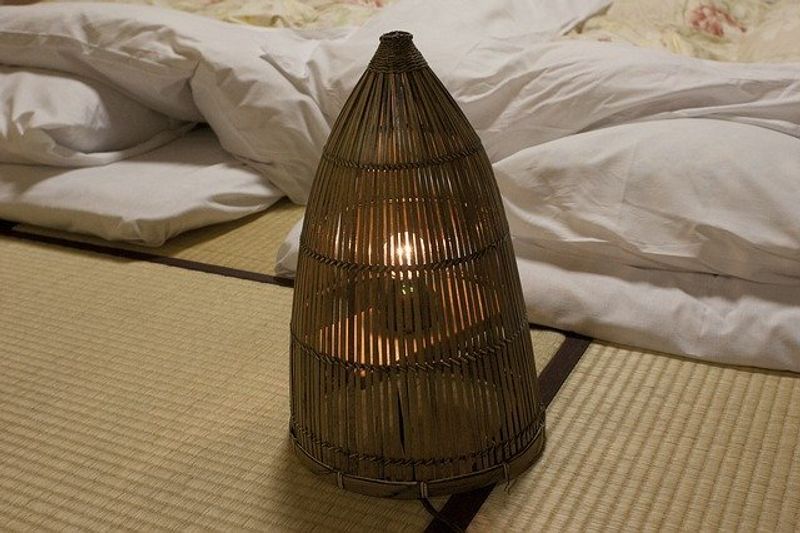Jan 4, 2020
Futons for Quality Sleep and Health

Image by Chonchoro
On my arrival in Japan, my landlady asked me if I wanted to have a bed or futon. I jumped at the chance of learning about the Japanese lifestyle, and said yes to the futon option. It’s become my preferred way to sleep. I feel refreshed after a good night’s sleep on a firm futon.
Futon Basics
Most futons marketed abroad are nothing like a Japanese futon. In North America, futon beds are thick, heavy mattresses on frames, often styled as sofas. They can be lumpy in the middle from the sofa frame. Japanese shikibuton, the bottom mattress, and kakebuton, a comforter are placed directly on the floor or tatami. Quality futon are filled with cotton batting. The firmness of the futon supports my back well.
Pillows, called makura in Japan, are filled with cotton, down, synthetic fiber, buckwheat and even plastic pipe. After some experimentation, I found I like the plastic pipe-filled version. Like a buckwheat pillow, it took a little getting used to as it rustles. However, the fill conforms to the shape of my head, and supports my neck and upper back alignment. It doesn’t hold heat, so I find it the most comfortable. On top of that, it is easier on my complexion, as I rest my head not my face on the pillow, which might help me keep wrinkles at bay.
Futon Care
Because a futon is light, it’s a cinch to put it out on sunny days once a week. Every night it gets compressed, but when it’s warmed in the sun for a few hours, it recovers its loft and smells fresh. The sun exposure kills bacteria, too. Some people beat their futons, but I simply vacuum them on both sides after sun-drying them. They never smell musty.
Futon and Health
Studies indicate that mattresses are populated by dust mites and loaded with dust, and research suggests you ought to leave the covers off the bed so the bugs don’t have a party in the moist conditions you provide them.
Futons are easy to air out, so they may not gather as much dust or hold as much moisture as mattresses as long as you’re diligent about care. When it’s gloomy outside, I throw the futon over a rail or the back of the sofa to dry. One thing to consider is that, because the futon is on the floor, you’re closer to the accumulation of the day’s dust lying there. So sleeping on a futon is a motivator for cleaning. I vacuum and swipe the floors a few times a week so that I’m not inhaling that detritus.
I find that the firm futon supports my neck properly and I rarely suffer back pain. As long as I air my futons regularly, they keep their loft, and there is no dip in the middle to fall into like old mattresses get.
In summer, I use a cool quilted pad that creates air space that keeps me dry. The plastic pipe pillow is also cool. Drier conditions let me sleep better.
In winter, I heap a few extra blankets over the kakebuton. Some studies indicate that weighted blankets can provide a more restful sleep and even relieve anxiety. I find that heavy blankets feel like a warm hug and I sleep like a log.
The portability of the futons has other health benefits, too. I can move my futon seasonally to take advantage of warmer or cooler rooms and air conditioning for better sleeping conditions. And the biggest benefit of having a couple futon sets when you share your space with a partner is, you can either set them snugly together, or retreat to opposite ends of the house if one, or both of you, have different sleep needs. Or one or both of you snores…



0 Comments